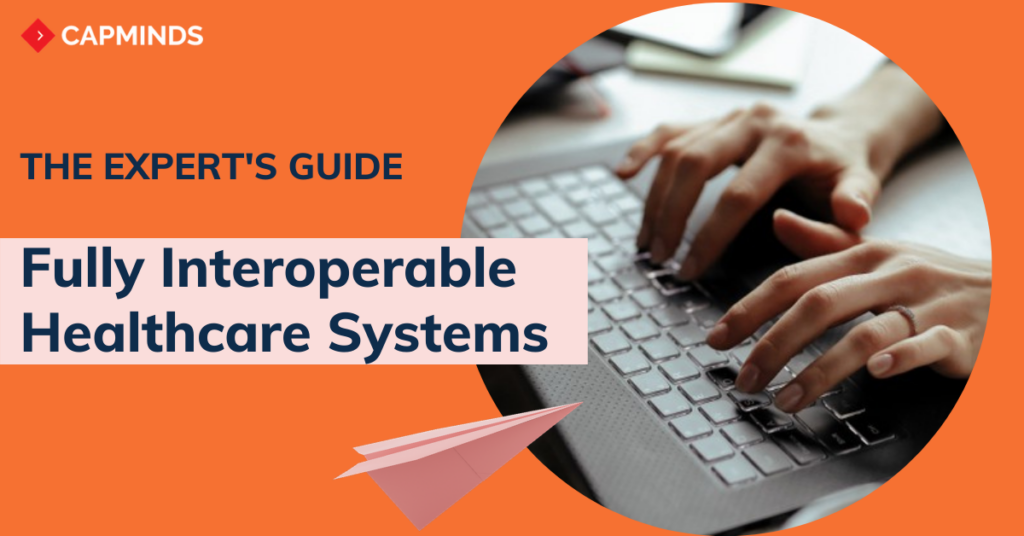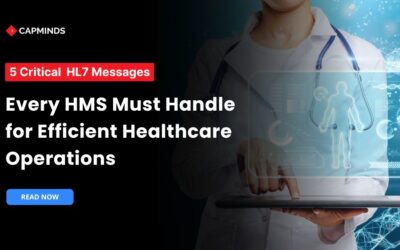Fully Interoperable Healthcare Systems:The Expert’s Guide
The conversation
around interoperability focuses mainly on EHR systems, the goal is to ensure
that patients and their providers have access to all of their healthcare data.
But the value of interoperability goes beyond EHR to every system within the
healthcare IT ecosystem. Here is the importance of fully interoperable
healthcare systems.
What Is
Interoperability?
Put simply,
interoperability allows different healthcare information technologies to
communicate with one another. This is important for many reasons, but here are
a few data points that highlight the problems associated with keeping data in
silos rather than interoperable systems:
Improved
Patient Care And Patient Experience
Patients may
receive care from a variety of providers — not just clinics and hospitals, but
senior care facilities, home health agencies, and more. Integrating data across
the continuum of care gives all of these providers access to a patient’s full
medical history, which means they can provide the best possible care. In a 2018
survey of U.S. health system executives and finance leaders, 52% said that data
sharing is the technology that will have the biggest positive impact on the
patient experience.
Decreased
Errors
Medical
error is the third leading cause of death in the United States (pre-pandemic),
and 44% of these deaths are preventable, according to an analysis published in
The BMJ. While not all medical errors can be attributed to errors in medical
records, some of them certainly can.
Data entry errors are the top reason for duplicate medical records, which impacts the accuracy of patient matching. Errors like these often lead to the ordering of duplicate lab tests and other inefficiencies that cost healthcare systems both time and money.
RELATED: HEADING TOWARDS THE FUTURE OF HEALTHCARE INTEROPERABILITY
Reduced
Administrative Costs And Increased Efficiency
More than
one-third of healthcare costs in the U.S. are administrative, according to a
recent analysis. Interoperability reduces those costs by reducing the number of
staff required for data entry and managing mismatched or unmatched patient
records. By one estimate, “standardized, encoded, electronic healthcare
information exchange” can save the U.S. healthcare system as much as $78
billion every year.
Easier
Invoicing And Billing Process
Beyond
medical records, interoperability can span all systems healthcare providers
use, including billing systems. The Business Payment Coalition estimates that
e-invoice adoption could save businesses $4 to $8 per invoice. For a hospital
issuing 2,500 invoices a month, that’s $10,000 to $20,000 in savings every month
on invoices alone.
Referral
Capture, Evaluation, And Follow-Up
Whether you
operate a hospital, a skilled nursing facility, or a home care agency, your
business likely depends heavily on referrals. When a new referral comes in, say
from an institutional referral source, how efficient is your process of
capturing, evaluating, and following up on that referral? On the flip side, do
you have a process for soliciting referrals from satisfied patients?
With
interoperability, you can capture referrals from all sources, follow up with
them, track their patient journey (even after discharge) and solicit new
referrals, all within the same system.
Increased
Technology Adoption
The
expansion of healthcare IT has come with a related problem — the challenge of
getting people to adopt new technologies. Interoperability goes a long way
toward solving this because users can log in once and have all of the data they
need at their fingertips, rather than having to toggle between several
different systems.
Still, any
new technology can come with hurdles to implementation. Organizational
technology adoption can be greatly improved with the following best practices:
• Before the
launch of any new technology, get buy-in from all stakeholders. From leadership
down to the employees who will use the technology regularly, they must
understand the benefits.
• Better
define organizational benefits by setting goals. By defining the goals, the
staff understands what is expected and, most importantly, it gives them a
yardstick to measure success.
• Provide
proper training. Proper training ensures your employees understand the new
technology and can use it effectively and with confidence.
Once the
technology is in place, solicit feedback about how it is going. This could take
the form of one-to-one conversations, team lunches, or online surveys. This
feedback will help you address any small problems before they become big ones.
It will also provide valuable information about your technology launch process
so you can refine it for the next time.
Final
Thoughts
Healthcare
interoperability will continue to grow as new technological advancements are
booming day by day in the healthcare sector. To achieve true interoperability,
healthcare organizations and IT leaders should make use of advanced
applications to communicate and exchange patient health data efficiently and
securely. CapMinds healthcare interoperability solutions – HL7 FHIR integration
services help the healthcare practices to access and standardize health data
seamlessly.

 Author: Pandi Paramasivan
Author: Pandi Paramasivan


